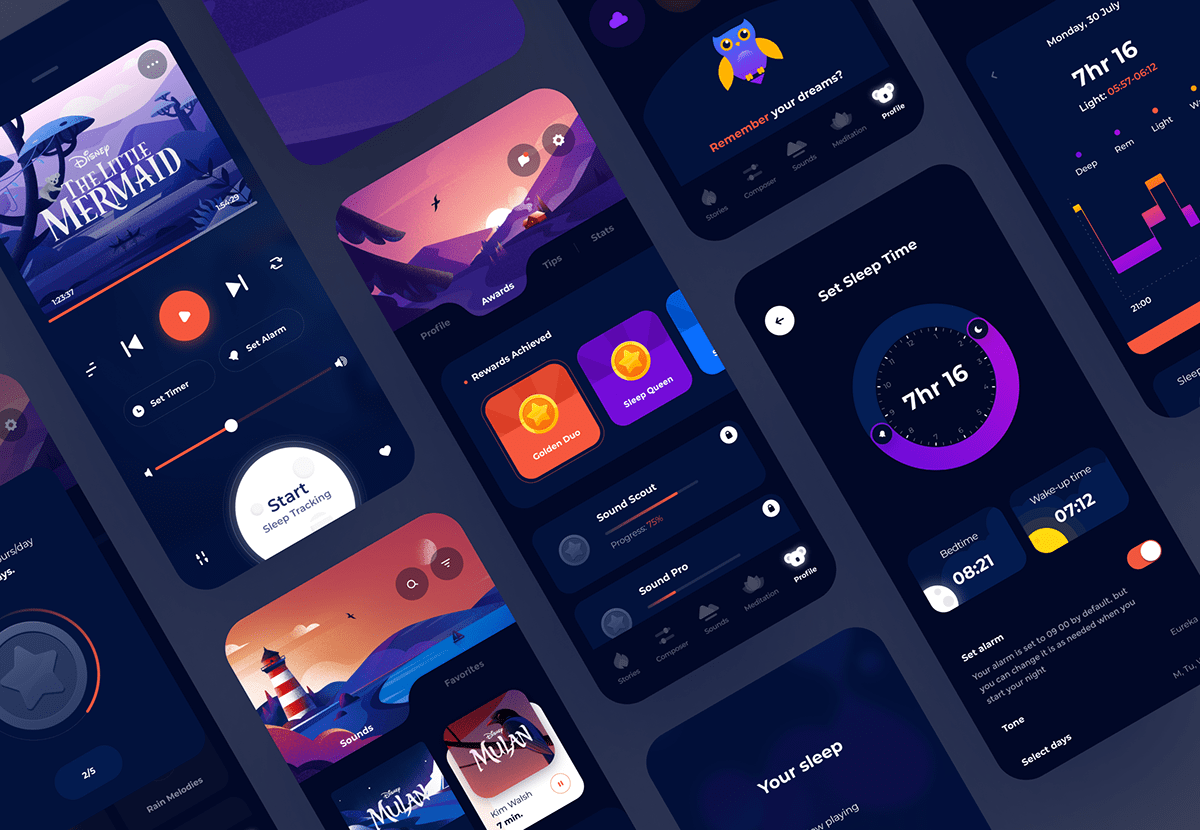The Basics of UI UX Design A Beginner’s Guide
Author: Daniel Marsh | Published: February 5, 2025 | Category: Design

If you’ve ever visited a website that just felt right—intuitive, smooth, and visually appealing—you’ve experienced the power of great UI/UX design. But what exactly is UI/UX, and how do front-end languages like HTML, CSS, and JavaScript bring websites to life? Let’s break it down in a fun and informative way!
What is UI/UX Design?
UI (User Interface) and UX (User Experience) go hand in hand, but they serve different purposes:
- UI Design focuses on how a website looks—the layout, colors, buttons, typography, and all the visual elements that make up the interface.
- UX Design is all about the user’s journey—how easy and enjoyable it is to navigate the site, find information, and complete tasks.
Think of UI as the paint job and design of a car, while UX is how smooth and enjoyable the driving experience is.
Why UI/UX Matters
Great UI/UX design ensures that users stay engaged, convert into customers, and have a seamless browsing experience. Here are some key use cases:
- E-commerce websites: A smooth checkout process with intuitive navigation increases sales.
- SaaS applications: Well-designed dashboards enhance productivity and usability.
- Portfolio sites: A sleek, professional look helps freelancers showcase their work effectively.
- Mobile apps: UI/UX ensures intuitive interactions and ease of use, reducing user frustration.
- Blogging platforms: Readability and accessibility encourage users to consume more content.
Without good UI/UX, users may leave the site due to confusion, frustration, or poor aesthetics.
Front-End Development: The Tech Behind the Design
Front-end development is where UI/UX design turns into reality! It’s the coding magic that makes web pages functional and interactive. Here are the key front-end technologies you should know:
1. HTML (HyperText Markup Language)
HTML is the skeleton of any web page. It structures content using elements like headings (<h1> to <h6>), paragraphs (<p>), images (<img>), and links (<a>). Without HTML, there’s no webpage—just an empty void!
Use Cases of HTML
- Structuring articles, blogs, and text-based content.
- Embedding multimedia like images, videos, and audio files.
- Creating forms for user inputs like sign-ups and logins.
- Linking different pages together within a website.
- Enhancing accessibility with semantic HTML elements.
2. CSS (Cascading Style Sheets)
CSS is the makeup and wardrobe of a website. It styles the HTML elements, adding colors, fonts, spacing, animations, and responsiveness. With CSS, you can make a basic HTML page look sleek and modern.
Use Cases of CSS
- Designing website layouts with Flexbox and Grid.
- Adding hover effects, animations, and transitions.
- Creating mobile-responsive designs with media queries.
- Implementing dark/light themes dynamically.
- Customizing typography for better readability and branding.
3. JavaScript (JS)
JavaScript is where the magic happens. It adds interactivity to websites, like dropdown menus, image sliders, form validations, and dynamic content updates. If HTML is the skeleton and CSS is the styling, JS is the brain that makes things move and react.
Use Cases of JavaScript
- Validating forms before submission to improve data accuracy.
- Creating interactive UI components like modals and pop-ups.
- Implementing real-time updates (e.g., live chat, stock prices).
- Fetching data from APIs to display dynamic content.
- Developing single-page applications (SPAs) using frameworks like React and Vue.
4. Bootstrap (A Powerful CSS Framework)
Bootstrap is like a shortcut to beautiful design. It’s a CSS framework packed with pre-styled components (buttons, grids, forms) and responsive design features. Developers use Bootstrap to build professional-looking websites quickly without reinventing the wheel.
Use Cases of Bootstrap
- Rapidly prototyping website layouts.
- Ensuring mobile-first responsive designs.
- Adding pre-built navigation bars, modals, and carousels.
- Simplifying complex grid-based designs.
- Maintaining consistency across large projects with predefined UI elements.
5. SVG (Scalable Vector Graphics)
SVG is used for crisp, scalable graphics that don’t lose quality on different screen sizes. Unlike regular images, SVG files are lightweight and can be animated with CSS or JavaScript, making them perfect for UI elements like icons and logos.
Use Cases of SVG
- Creating logos that scale without pixelation.
- Designing interactive animations and infographics.
- Implementing animated loading spinners and buttons.
- Enhancing user experience with dynamic icons.
- Reducing page load times compared to traditional image formats.
How It All Comes Together
Imagine you’re building a modern website:
- You structure the content with HTML
- You style it beautifully with CSS (or a framework like Bootstrap)
- You add interactivity with JavaScript
- You include smooth, scalable graphics using SVG
- You follow UI/UX principles to make it user-friendly and visually engaging
Together, these technologies create an engaging and functional website that users love to interact with.
Final Thoughts
Mastering UI/UX design and front-end development opens the door to endless creative possibilities. Whether you’re designing a personal blog, an e-commerce store, or a corporate website, understanding these fundamentals will help you build web experiences that people love.
To keep up with the latest trends, explore JavaScript frameworks like React, Vue, or Angular, experiment with CSS animations, and always focus on usability and accessibility.
Ready to start coding? Experiment with HTML, CSS, and JavaScript, and try frameworks like Bootstrap to speed up your workflow. The more you practice, the more you’ll think like a designer and code like a developer!
Need a custom website for your business? CodeBlock.io specializes in creating sleek, responsive, and user-friendly websites powered by modern front-end technologies. Let’s bring your vision to life!